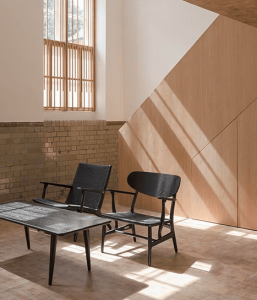High energy bills are one of the biggest topics in the UK at the moment. As a result, it should inspire people to look at how they can make their home more efficient. If you are considering a new build or renovation, you should look at a passive house design. It can be a great way to keep your energy usage and bills down. As an architect London clients can rely on for all kinds of creative designs, we can look at why this is such a good decision.
The history
As a starting point, let’s look at where the idea originally came from. The early prototypes date back to the 90s in southwest Germany. Researchers, including academics Bo Adamson and Wolfgang Feist, were looking at passive ways to heat and cool homes to maintain a comfortable temperature.
In 1996 Feist founded the Passivhaus Institute. The research institute was to focus on promoting the philosophy as well as improving the technology. Today it is a well known standard that homes, schools, and other properties are built to. Countries all around the world now have passive builds.
Designing a passive house
 If you are thinking of this kind of design, you need to look at the five founding principles. They will help you to create a home that isn’t as reliant on electricity or gas for heating, cooling, and ventilation.
If you are thinking of this kind of design, you need to look at the five founding principles. They will help you to create a home that isn’t as reliant on electricity or gas for heating, cooling, and ventilation.
Firstly you must look to maximise the insulation. The goal here is to create an envelope of it around the property with no breaks. What this does is boost heat retention to keep the building at a consistent temperature.
Often the weak spot in the insulation envelope will be the windows. However, you can address that by choosing the highest quality products with multiple layers of glazing. What this will do is reduce heat loss via the glass.
Next you need to ensure there won’t be issues with thermal bridging. Some materials aren’t as well insulated as others. As a result they can allow heat to escape from the property. To tackle this you need to ensure you choose materials that won’t allow high levels of thermal bridging. You should pay particular attention to window frames and doors because they can be some of the worst culprits.
The fourth thing to think about is how airtight the building is. You need to avoid airflows that compromise the envelope of insulation. However, you still need to allow air in to keep the interior fresh. So, you must think about the airflow in the design stage and should only use quality construction materials.
A final principle is to use mechanical ventilation. It is a great way to continuously remove dirty, moist air and then replace it with fresh air from outside. You accomplish this with a HRV ventilator. The systems can even remove heat from the air they expel and use it to warm up the fresh supply. That ensures you don’t waste any of the warmth.
Speak to a top architect in London
The principles of a passive house are excellent and you can use them to create an energy efficient home that is warm and comfortable. It all comes down to getting the right design and using the best materials. We can help you with that.
You can rely on Coffey Architects for any kind of project, from homes renovations and new builds to designing commercial spaces. When you choose us, we will work to get the very best for you. That is one of the advantages of working with the top architect London can offer. So, contact us today to start telling us what you have in mind.
